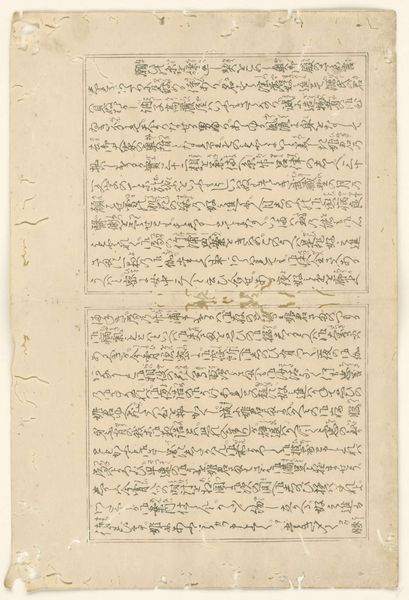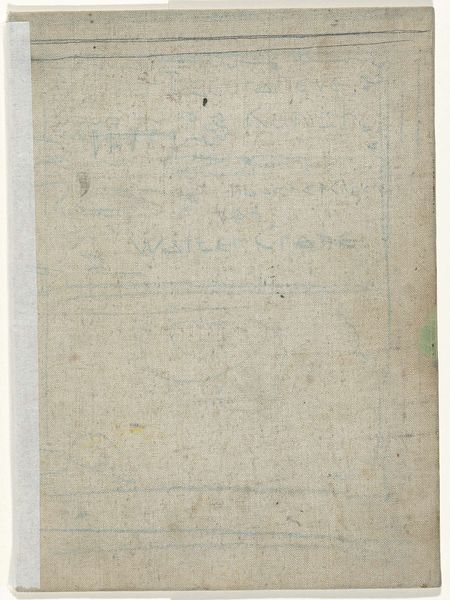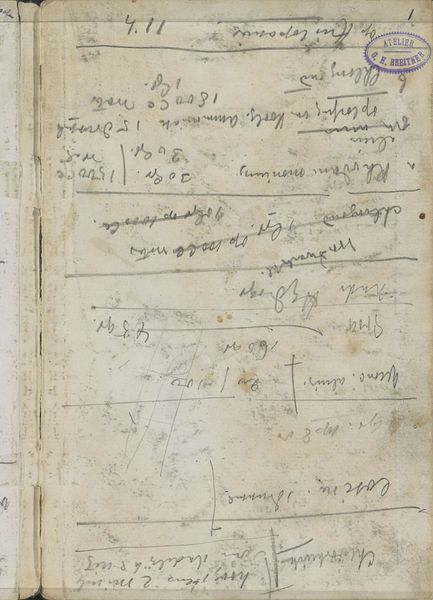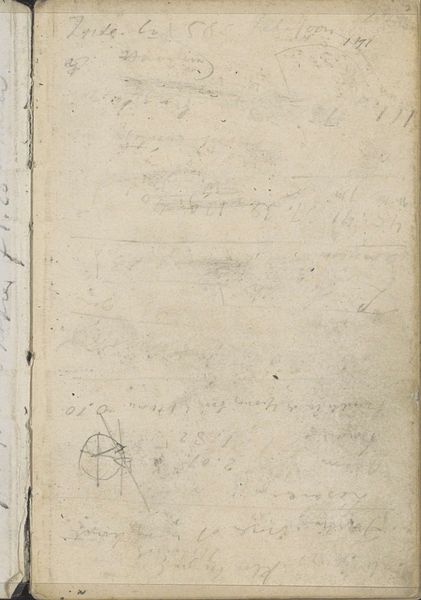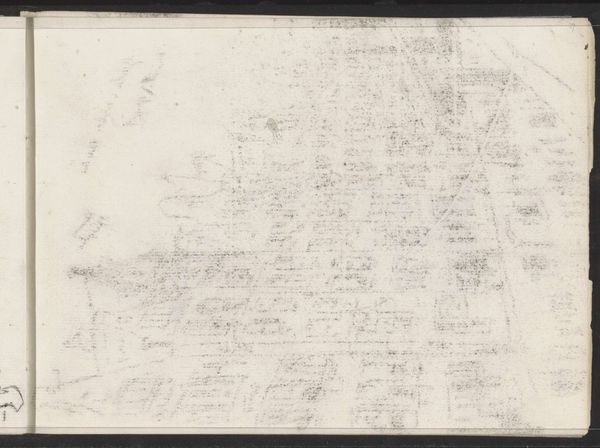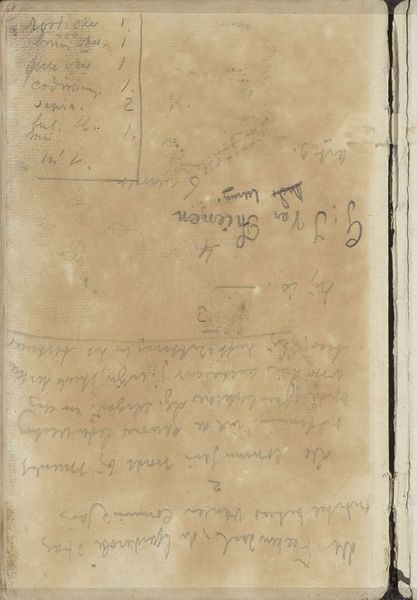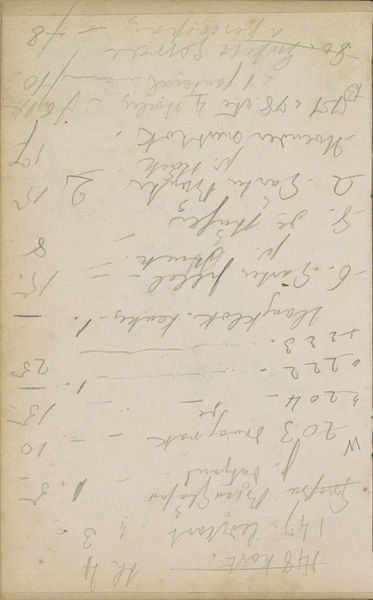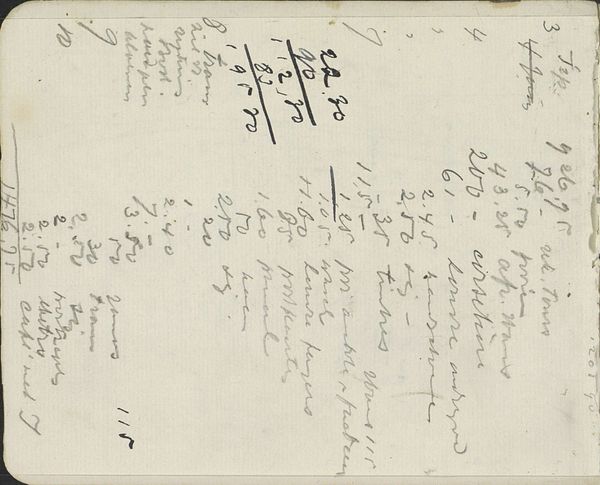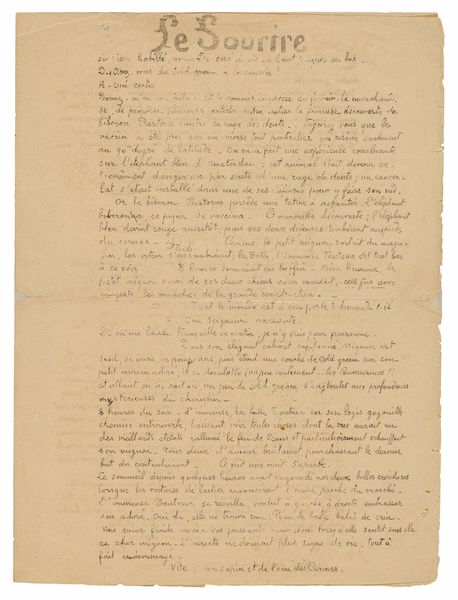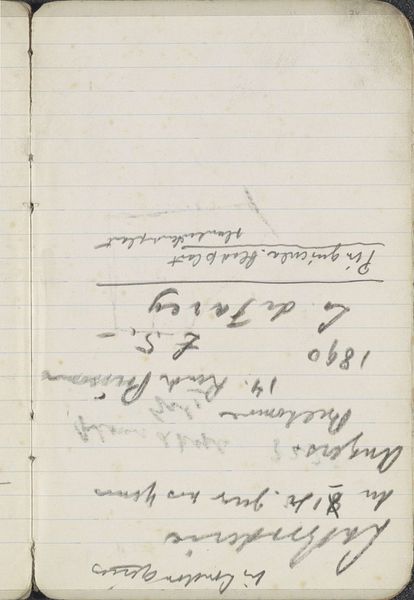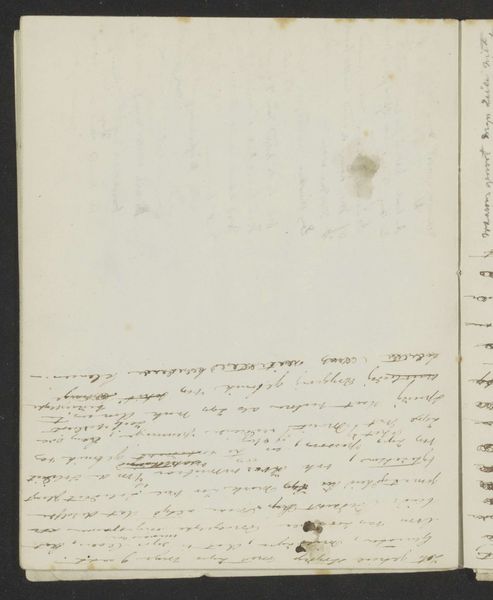
print, textile, paper, ink
# print
#
asian-art
#
textile
#
ukiyo-e
#
paper
#
ink
Dimensions: height 254 mm, width 381 mm
Copyright: Rijks Museum: Open Domain
Curator: Looking at this object, one notices that the paper seems worn but preserved, the ink remarkably sharp given its age. This piece, titled "Voorwoord van Negai no itoguchi," which roughly translates to "Preface to the Entrance of Wishes," dates from 1799 and is by the artist Kitagawa Utamaro. It resides here at the Rijksmuseum. Editor: It’s all so delicate, really gives me the feeling that just my breath would cause it to turn into dust. The text itself looks lovely—but beyond my comprehension! I can sense it might contain precious meaning just by its placement on the sheet. Curator: The "ukiyo-e" style that Utamaro practiced focused largely on capturing everyday life and the ephemeral nature of beauty. Utamaro printed it using woodblocks, where each color often required a separate block and a highly skilled artisan to ensure precision. This process highlights the complex workshop and distribution network that supported such artistry in Edo period Japan. Editor: Interesting that you mention process, I do wonder how paper like this was made? Knowing the composition, the source of the fibers—did they grow hemp to a specific density or weave textiles only to shred them afterwards to recycle their essential matter? I also noticed the upper left corner of the print—evidence of earlier handling seems apparent, but its material essence is wonderfully resilient. Curator: Such questions also illuminate a vital shift occurring during the period. Utamaro’s art challenged existing hierarchies; these “pictures of the floating world” were created and then rapidly consumed as prints made accessible forms of culture to a far wider audience than ever before. This very consumption is as significant as its making. Editor: Absolutely! Consider how the inks were sourced—what mineral and vegetal components contribute to this visual archive. Paper and ink together becoming an apparatus. Now almost fossilized here in the museum. To analyze the components that comprise them speaks volumes about the resources exploited for these art economies of scale to evolve in the late eighteenth century. Curator: These layered cultural and material meanings embedded within "Voorwoord van Negai no itoguchi" give us unique access to the complex artistic and social landscape of Utamaro's era. Editor: Yes, and appreciating both material conditions and labor of its making and its societal context helps us think through how an art work like this enters the global stage, shifting throughout centuries the cultural understanding it engenders.
Comments
No comments
Be the first to comment and join the conversation on the ultimate creative platform.


